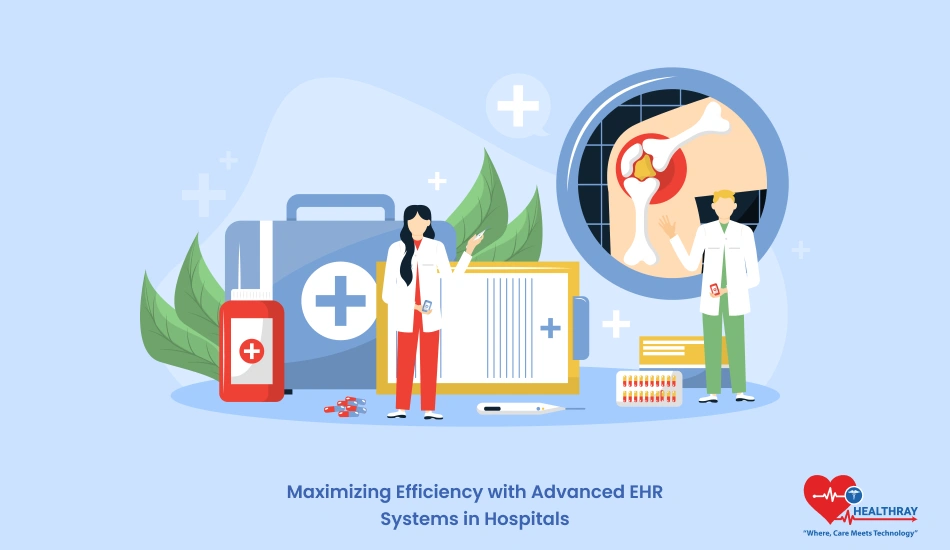Improving Efficiency with Innovative EHR Systems in Hospitals Maximizing Efficiency with Advanced EHR Systems in Hospitals
Hospitals and clinics always have a way to simplify their workflows, reduce errors, and enhance care of patients. Sophisticated EHR systems serve to accomplish this purpose. Not only do the EHRs store patient information, but these systems assist the healthcare professionals to manage their day-to-day affairs efficiently. EHRs ease the process of sharing, reduce paperwork, and provide immediate assistance to the physician.
We shall discuss in this article how you can use your advanced EHR software to create less burden and more comfort at the staff side, improve your patient care standards, and strengthen your overall system efficiency. In this article, whether you administer a small-scale clinic or perform operations in managing a large mult-specialty hospital, find actionable strategies that will make good use of an EHR.
Why EHR Optimization is crucial for hospitals?
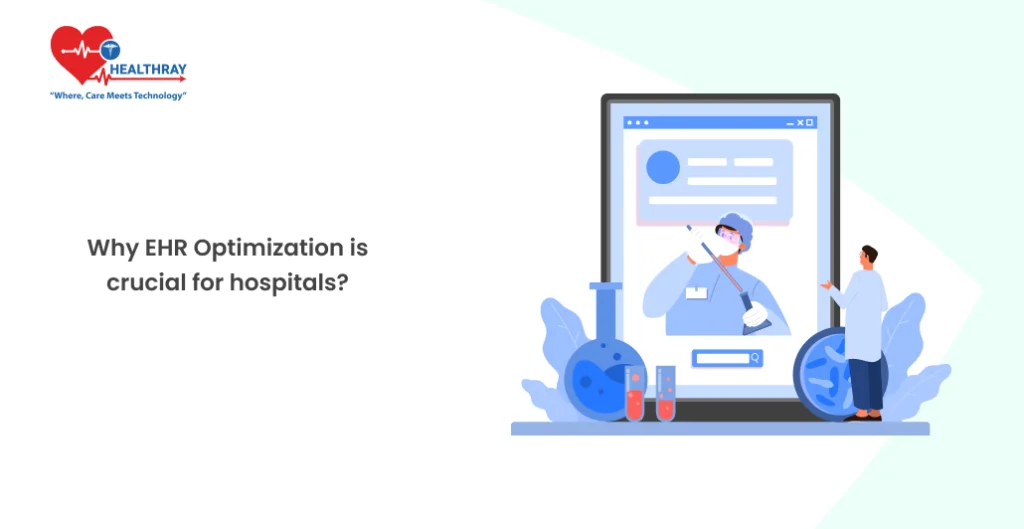
Hospitals and clinics will have inefficiencies in their present EHRs, which fragment the workflow of hospitals, with chances of re-entering some data, and usually poor communication with departments. While the hospitals increase in size, the demand in healthcare increases significantly, and, hence, optimizes EHR Software.
Why optimize your EHR system?
Optimization will ensure that the system satisfies the needs of your small clinic or your large multispecialty facility. It can automate various tasks, for instance, scheduling, billing, and inventory. EHR optimization for clinical staff will also see the acceleration of documentation time while reducing administrative work. More importantly, this process makes patient records accessible.
Benefits of EHR Optimization
Reduced Administrative Work: Automated scheduling, billing, and inventory allow your employees to concentrate more time on the patient.
Improved Patient Outcomes: With easy access to histories about the patients and decision-support tools, the treatment will be better informed.
Interoperability: The optimized EHR systems allow free data flow between departments and even other healthcare providers outside the facility. Optimization of your EHR system helps in reducing administrative overload, clinical workflows, and this helps in taking care of patients better.
Key Features of Advanced EHR Systems
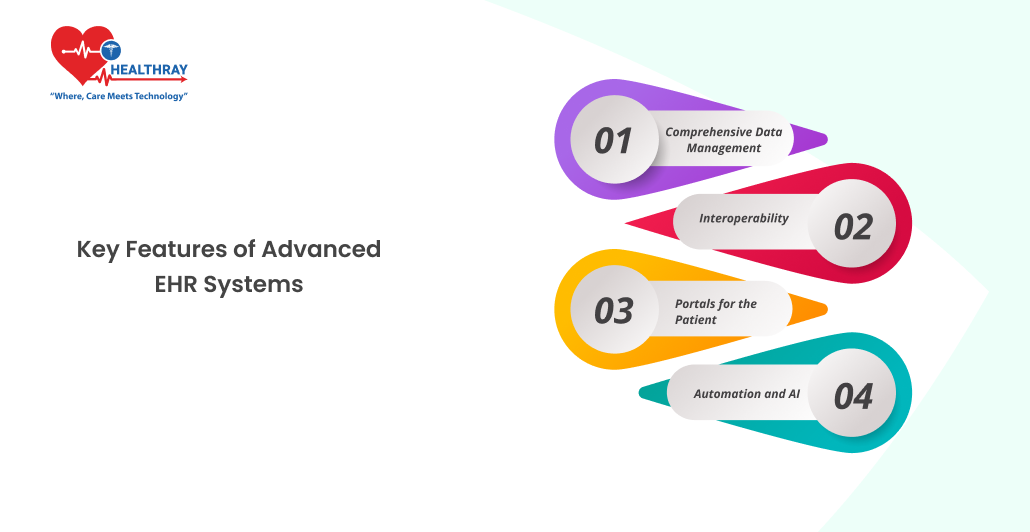
Optimized EHR systems bring powerful features that improve efficiency and patient care in hospitals. Some of the key features include:
Comprehensive Data Management
EHR systems summarize all the patients’ files on one place and enable clinicians to see thorough histories, test results, and treatment plans with just a look. This improves clinical decision making and reduces errors.
Comprehensive Data Management
The systems allow alerts to reach the doctor suggesting any treatment plans or possible medication interaction and other similar data, therefore lowering the probability of medical mistakes.
Interoperability
Modern EHRs will interface well with other laboratories, pharmacies, and health networks to ensure a free flow of data within the health ecosystem, thereby allowing an effective coordination of care among different departments and the providers.
Portals for the Patient
Some EHRs enable patients to view their electronic health records and communicate with their providers by writing a message or by scheduling appointments, courtesy of patient engagement portals. This is one element that enhances the patient’s engagement and satisfaction.
Automation and AI
Automation of routine tasks like scheduling, billing, and documentation frees up the burden on staff to spend more time taking care of the patients. In some systems, AI is integrated for predictive analysis and support in documentation.
Best Practices to Leverage EHRs
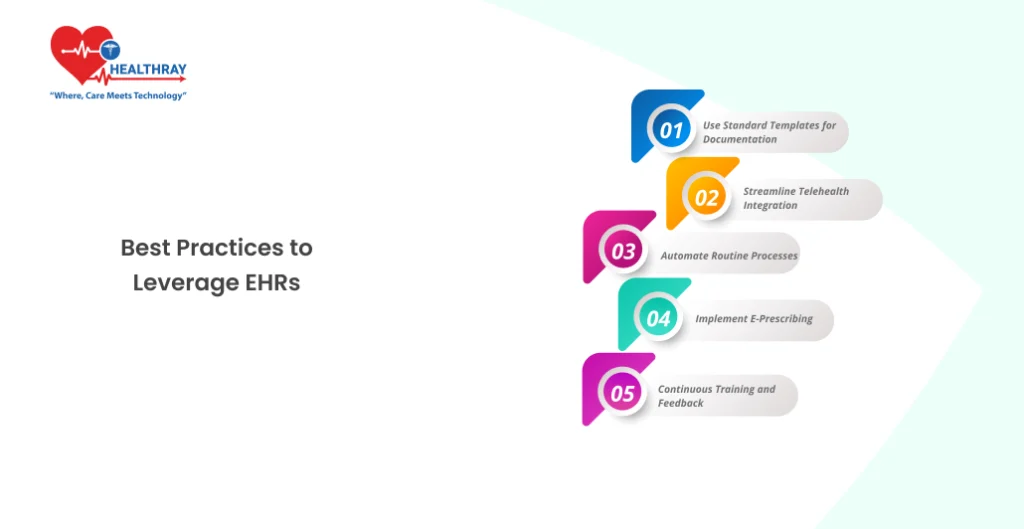
Hospital administration must have a strategy for EHR optimization for the best yield. Some such strategies are mentioned here
Use Standard Templates for Documentation:
Pre-designed templates for routine visits with patients help the providers document easier, thus it is more likely that the provider will capture all the important information in fewer minutes spent recording data. Specialized care service providers are very advantaged by customized templates for individual medical conditions.
Streamline Telehealth Integration
Telehealth can integrate with EHRs and allows virtual visits with the facility to update real-time patient records. It’s easier and continuous for patients, especially those from rural or underserved areas.
Automate Routine Processes
Automatic tasks like reminding patients of their appointments, billing, and claims of insurance allow your staff to do more crucial things like take care of the patient and eliminate human errors.
Implement E-Prescribing
Electronic prescribing allows a doctor to transmit prescriptions directly to pharmacies; it is more accurate, faster, and reduces errors in medication.
Continuous Training and Feedback
Always train your staff on updates and best practices. Feedback loops will also help find areas of inefficiency so you can continually perfect your system.
Success Story of an EHR Optimized in the Real World
The data were fragmented, and all sorts of administrative work were piling up over a multispecialty hospital. Optimizing EHR for the hospital streamlined patient record and automated several administrative functions such as scheduling, billing, and allowed 20% improvement in the workflow efficiency, giving way to more time to care for the patients.
The hospital also implemented clinical decision support tools that reduced the occurrence of medical errors and boosted the rate of treatment in the hospital. Now that a patient portal was there in the hospital, patients become more involved with their care that translated into outcomes on the bright side.
They changed their broad operational model by optimising EHR, staff satisfaction improved, and overall results in terms of patients’ showed improvements.
IT and Leaders help Through EHR Optimization
EHR will only be optimally optimized if there is collaboration from the leadership, the IT department, and all the medical staff. Here’s how each plays a role:
Leadership’s Role
The CTO and the COO in the hospital are in charge of prioritizing EHR optimization, securing resources and funds for updates. In managing the change, leadership communicates the benefits of optimization to the staff and encourages buy-in.
The IT Department’s Role
The system runs fluently coupled with all other health care networks and keeps on maintaining the security of the system while IT teams are supporting the clinicians in fitting the needs of the hospital to the system better.
Continuous Training Support
Staff is updated on the different features of the system through continuous training. Regular support through feedback improves awareness of the issues at hand and raises the user experience.
Challenges Faced and their Resolution
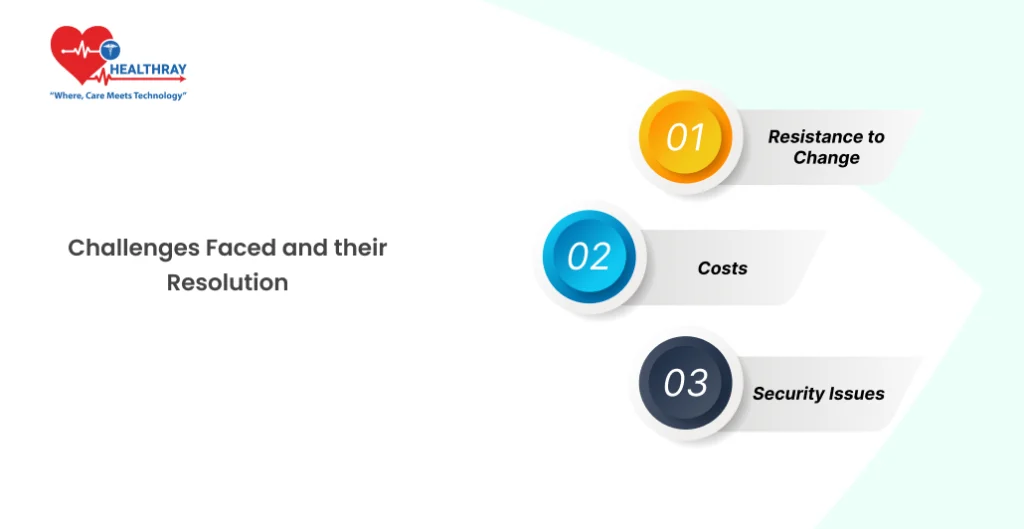
With these advantages comes some difficulties to implement sophisticated EHR systems:
Interoperability Issues
The majority of the hospitals are suffering from the inability of various systems to talk to each other. This can be achieved by selecting the systems that meet the standards and investing in interoperability-friendly solutions.
Resistance to Change
Staff resists change from manual systems to digital EHRs. Early engagement of the staff in the decision-making process and comprehensive training helps ease the change.
Costs
The initial investment for the EHR system is very high, especially for smaller clinics. The cloud-based solutions can reduce the costs, and government incentives are also available to offset the initial expenses.
Security Issues
Since large amounts of patient data are at risk, hospitals must ensure that EHR systems are compliant with privacy laws and include strong cybersecurity measures such as multi-factor authentication and encryption.
Conclusion
Advanced EHR systems are best suited for the hospital and clinic as they would save one’s time, reduce errors, and increase the level of care towards patients. Optimal adjustment of your EHR to the needs of your hospital will cut administrative burdens from your staff’s shoulders so they can be devoted to the true care of their patients.
A transition to an optimized EHR system with effective leadership, IT support, and continuous training of staff will transform the very nature in which your hospital operates. Of course, challenges abound, but the rewards far outweigh this as long as patient outcomes are improved and healthcare environment becomes efficient.he way your hospital operates. The challenges are real, but the rewards are significant, leading to better outcomes for patients and a more efficient healthcare environment.
